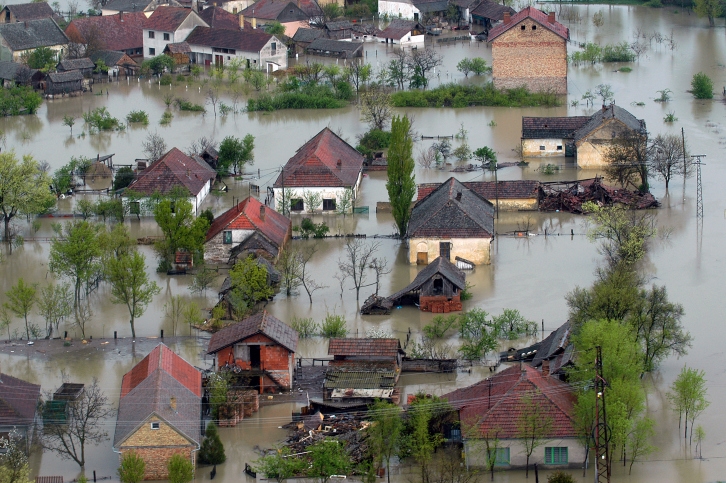Flood Insurance: Two Residential Structures Under One Policy

Question: We have a loan which is secured by a single family residential property with a guest house located on the property. The guest house is connected to the main residence via an elevated deck. In the past, we have required separate flood insurance policies for the main residence and the guest house. Our borrower would like to have both buildings covered under the same policy. Is this permissible?
Answer
If a building securing a loan is in a special flood hazard area, the lender must require flood insurance in an amount at least equal to the lesser of the outstanding principal balance of the loan or the maximum limit of coverage limit of coverage available under the National Flood Insurance Program (NFIP). [12 CFR § 339.3]
“Building” is defined as a “walled and roofed structure, other than a gas or liquid storage tank, that is principally above ground and affixed to a permanent site, and a walled and roofed structure while in the course of construction, alteration, or repair”. [12 CFR § 339.2]
The flood insurance requirement does not apply with respect to “any structure that is a part of any residential property but is detached from the primary residential structure of such property and does not serve as a residence”. A structure is "detached" from the primary residential structure if it is not joined by any structural connection to that structure and it “serves as a residence” if it is “intended for use or actually used as a residence, which generally includes sleeping, bathroom, or kitchen facilities”. [12 CFR §339.4]
As the guest house serves as a residence and is attached to the main house by a structure (i.e. the deck), it does not qualify for the exemption from the flood insurance requirement, which brings us back to the initial question: can the main residence and guest house be covered under one flood insurance policy? Nothing in the regulation prohibits the structures from being covered by one policy.
In accordance with the NFIP Flood Insurance Manual, the NFIP “insures additions and extensions attached to and in contact with the building by means of a rigid exterior wall, a solid load-bearing interior wall, a stairway, an elevated walkway, or a roof.” Thus, the guest house can be considered an addition or extension of the guest house and both the main residence and guest house can be covered under one policy. Alternatively, the homeowner can cause the guest house to be separately insured. However, in permitting the structures to be covered by one policy, the lender as well as the homeowner must be mindful of the fact that limiting coverage to one policy could have a substantial effect on the ability of the homeowner to rebuild in the event of a flood.
Joyce Wilkins Pollison is director of Legal & Regulatory Compliance for Lenders Compliance Group.





